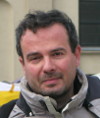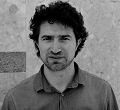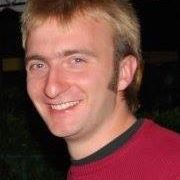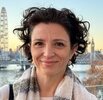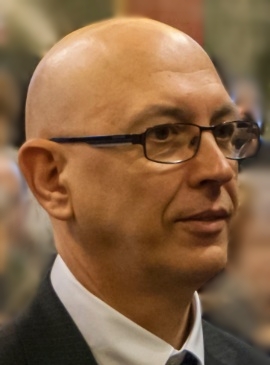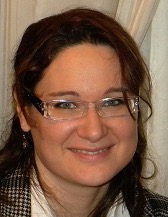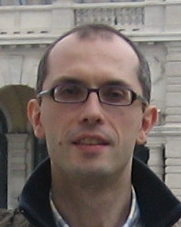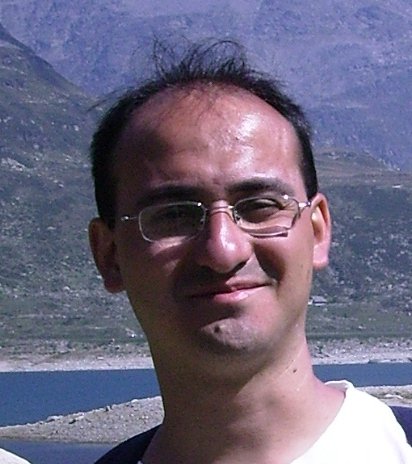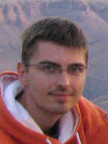Studying at the University of Verona
Here you can find information on the organisational aspects of the Programme, lecture timetables, learning activities and useful contact details for your time at the University, from enrolment to graduation.
Academic calendar
The academic calendar shows the deadlines and scheduled events that are relevant to students, teaching and technical-administrative staff of the University. Public holidays and University closures are also indicated. The academic year normally begins on 1 October each year and ends on 30 September of the following year.
Course calendar
The Academic Calendar sets out the degree programme lecture and exam timetables, as well as the relevant university closure dates..
| Period | From | To |
|---|---|---|
| I semestre | Oct 1, 2018 | Jan 31, 2019 |
| II semestre | Mar 4, 2019 | Jun 14, 2019 |
| Session | From | To |
|---|---|---|
| Sessione invernale d'esame | Feb 1, 2019 | Feb 28, 2019 |
| Sessione estiva d'esame | Jun 17, 2019 | Jul 31, 2019 |
| Sessione autunnale d'esame | Sep 2, 2019 | Sep 30, 2019 |
| Session | From | To |
|---|---|---|
| Sessione Estiva | Jul 18, 2019 | Jul 18, 2019 |
| Sessione Autunnale | Oct 17, 2019 | Oct 17, 2019 |
| Sessione Invernale | Mar 18, 2020 | Mar 18, 2020 |
| Period | From | To |
|---|---|---|
| Sospensione dell'attività didattica | Nov 2, 2018 | Nov 3, 2018 |
| Vacanze di Natale | Dec 24, 2018 | Jan 6, 2019 |
| Vacanze di Pasqua | Apr 19, 2019 | Apr 28, 2019 |
| Festa del Santo Patrono | May 21, 2019 | May 21, 2019 |
| Vacanze estive | Aug 5, 2019 | Aug 18, 2019 |
Exam calendar
Exam dates and rounds are managed by the relevant Science and Engineering Teaching and Student Services Unit.
To view all the exam sessions available, please use the Exam dashboard on ESSE3.
If you forgot your login details or have problems logging in, please contact the relevant IT HelpDesk, or check the login details recovery web page.
Academic staff
 maurizio.boscaini@univr.it
maurizio.boscaini@univr.it
 federico.busato@univr.it
federico.busato@univr.it
 mila.dallapreda@univr.it
mila.dallapreda@univr.it
Study Plan
The Study Plan includes all modules, teaching and learning activities that each student will need to undertake during their time at the University.
Please select your Study Plan based on your enrollment year.
1° Year
| Modules | Credits | TAF | SSD |
|---|
2° Year activated in the A.Y. 2019/2020
| Modules | Credits | TAF | SSD |
|---|
| Modules | Credits | TAF | SSD |
|---|
| Modules | Credits | TAF | SSD |
|---|
| Modules | Credits | TAF | SSD |
|---|
2 modules among the followingLegend | Type of training activity (TTA)
TAF (Type of Educational Activity) All courses and activities are classified into different types of educational activities, indicated by a letter.
Physical human-robot interaction (2018/2019)
Teaching code
4S007197
Credits
6
Language
Italian
Also offered in courses:
- Advanced Robotics of the course Master's degree in Computer Science and Engineering
- Advanced Robotics - Teoria of the course Master's degree in Computer Science and Engineering
- Advanced Robotics - Laboratorio of the course Master's degree in Computer Science and Engineering
Scientific Disciplinary Sector (SSD)
INF/01 - INFORMATICS
The teaching is organized as follows:
Laboratorio
Teoria
Learning outcomes
The course aims to provide the theoretical foundations of teleoperation systems and physical interaction with the environment, with particular focus on the design of control architectures able to guarantee the stability of such systems even in the presence of uncertainty and communication delay.
At the end of the course the student should demonstrate that s/he has acquired the knowledge to analyze the technical characteristics and structural properties of a control system for direct or teleoperated interaction with the environment.
This knowledge will allow the student: i) to build the mathematical model of a teleoperation system; ii) to model physical human-robot interaction systems; iii) to design a control architecture to guarantee the stability; iv) to implement the control structure in Matlab/Simulink and/or in ROS (Robot Operating System).
At the end of the course the student will have acquired the ability to define the technical specifications for physical human-robot interaction systems and for bilateral teleoperation systems, and consequently to choose the most appropriate approach of designing the control architecture.
It will also be able: i) to work together with other engineers (e.g. electronic, control, mechanical engineers) to design advanced control architectures for complex physical human-robot interaction systems and teleoperation systems; ii) to enhance his/her knowledge on the design of control architectures based on stochastic and non-linear methods.
Program
Advanced topics that will be addressed during the course:
- manipulator dynamics
- motion control (PID)
- force control (force and impedance)
- passivity theory
- advanced algorithms for teleoperation
- communication time delay compensation
Topics that will be addressed during the lab activity:
- Tuning of PID controllers
- Implementation of velocity estimators
- Data-driven system identification
- Implementation of bilateral teleoperation algorithms in ROS/Matlab-Simulink
TEACHING AIDS: During the course, lecture notes, slides and scientific papers will be provided.
Examination Methods
The exam will consist of a project addressing some topics discussed during the course. The student should have to implement in ROS (and/or in Matlab/Simulink) a teleoperation algorithm, test it, and prepare a brief technical document explaining his/her work.
To pass the exam, the student should:
- have understood the principles related to the design of a bilateral teleoperation system,
- be able to use the knowledge acquired during the course to solve the assigned problem,
- be able to describe their work by explaining and motivating the design choices.
Teaching materials e documents
-

 Chapter Bode Diagram
(it, 353 KB, 31/03/19)
Chapter Bode Diagram
(it, 353 KB, 31/03/19)
-

 Chapter Nyquist
(it, 482 KB, 15/04/19)
Chapter Nyquist
(it, 482 KB, 15/04/19)
-

 Chapter PID
(it, 244 KB, 31/03/19)
Chapter PID
(it, 244 KB, 31/03/19)
-

 Chapter Specifications
(it, 329 KB, 31/03/19)
Chapter Specifications
(it, 329 KB, 31/03/19)
-

 Chopra-Spong-Lozano Algorithm
(it, 544 KB, 11/05/19)
Chopra-Spong-Lozano Algorithm
(it, 544 KB, 11/05/19)
-

 Dati Banchetto teleoperazione
(it, 2248 KB, 08/04/19)
Dati Banchetto teleoperazione
(it, 2248 KB, 08/04/19)
-

 DC motors
(it, 2149 KB, 25/03/19)
DC motors
(it, 2149 KB, 25/03/19)
-

 Franken et Al Algortihm
(it, 1281 KB, 26/05/19)
Franken et Al Algortihm
(it, 1281 KB, 26/05/19)
-

 Intro Teleoperation Part I
(it, 2578 KB, 06/03/19)
Intro Teleoperation Part I
(it, 2578 KB, 06/03/19)
-

 Intro Teleoperation Part II
(it, 1224 KB, 06/03/19)
Intro Teleoperation Part II
(it, 1224 KB, 06/03/19)
-

 Lee-Huang Algortihm
(it, 961 KB, 26/05/19)
Lee-Huang Algortihm
(it, 961 KB, 26/05/19)
-

 Lee-Spong Algorithm
(it, 725 KB, 11/05/19)
Lee-Spong Algorithm
(it, 725 KB, 11/05/19)
-

 Niemeyer-Slotine Algorithm
(it, 641 KB, 29/04/19)
Niemeyer-Slotine Algorithm
(it, 641 KB, 29/04/19)
-

 Passivity
(it, 390 KB, 15/04/19)
Passivity
(it, 390 KB, 15/04/19)
-

 PID controllers
(it, 566 KB, 11/05/19)
PID controllers
(it, 566 KB, 11/05/19)
-

 Ryu-Artigas-Preusche Algorithm
(it, 831 KB, 11/05/19)
Ryu-Artigas-Preusche Algorithm
(it, 831 KB, 11/05/19)
-

 Statistical filtering
(it, 333 KB, 08/04/19)
Statistical filtering
(it, 333 KB, 08/04/19)
-

 Teleoperation without comm. delay
(it, 464 KB, 31/03/19)
Teleoperation without comm. delay
(it, 464 KB, 31/03/19)
Type D and Type F activities
Documents and news
-
 PIANO DIDATTICO LM-18 LM-32
(octet-stream, it, 17 KB, 21/09/18)
PIANO DIDATTICO LM-18 LM-32
(octet-stream, it, 17 KB, 21/09/18)
Modules not yet included
Career prospects
Module/Programme news
News for students
There you will find information, resources and services useful during your time at the University (Student’s exam record, your study plan on ESSE3, Distance Learning courses, university email account, office forms, administrative procedures, etc.). You can log into MyUnivr with your GIA login details: only in this way will you be able to receive notification of all the notices from your teachers and your secretariat via email and also via the Univr app.
Tutoring faculty members
Graduation
Deadlines and administrative fulfilments
For deadlines, administrative fulfilments and notices on graduation sessions, please refer to the Graduation Sessions - Science and Engineering service.
Need to activate a thesis internship
For thesis-related internships, it is not always necessary to activate an internship through the Internship Office. For further information, please consult the dedicated document, which can be found in the 'Documents' section of the Internships and work orientation - Science e Engineering service.
Final examination regulations
List of thesis proposals
Attendance modes and venues
As stated in the Teaching Regulations, attendance at the course of study is not mandatory.
Part-time enrolment is permitted. Find out more on the Part-time enrolment possibilities page.
The course's teaching activities take place in the Science and Engineering area, which consists of the buildings of Ca‘ Vignal 1, Ca’ Vignal 2, Ca' Vignal 3 and Piramide, located in the Borgo Roma campus.
Lectures are held in the classrooms of Ca‘ Vignal 1, Ca’ Vignal 2 and Ca' Vignal 3, while practical exercises take place in the teaching laboratories dedicated to the various activities.

 +39 045 802 7980
+39 045 802 7980


